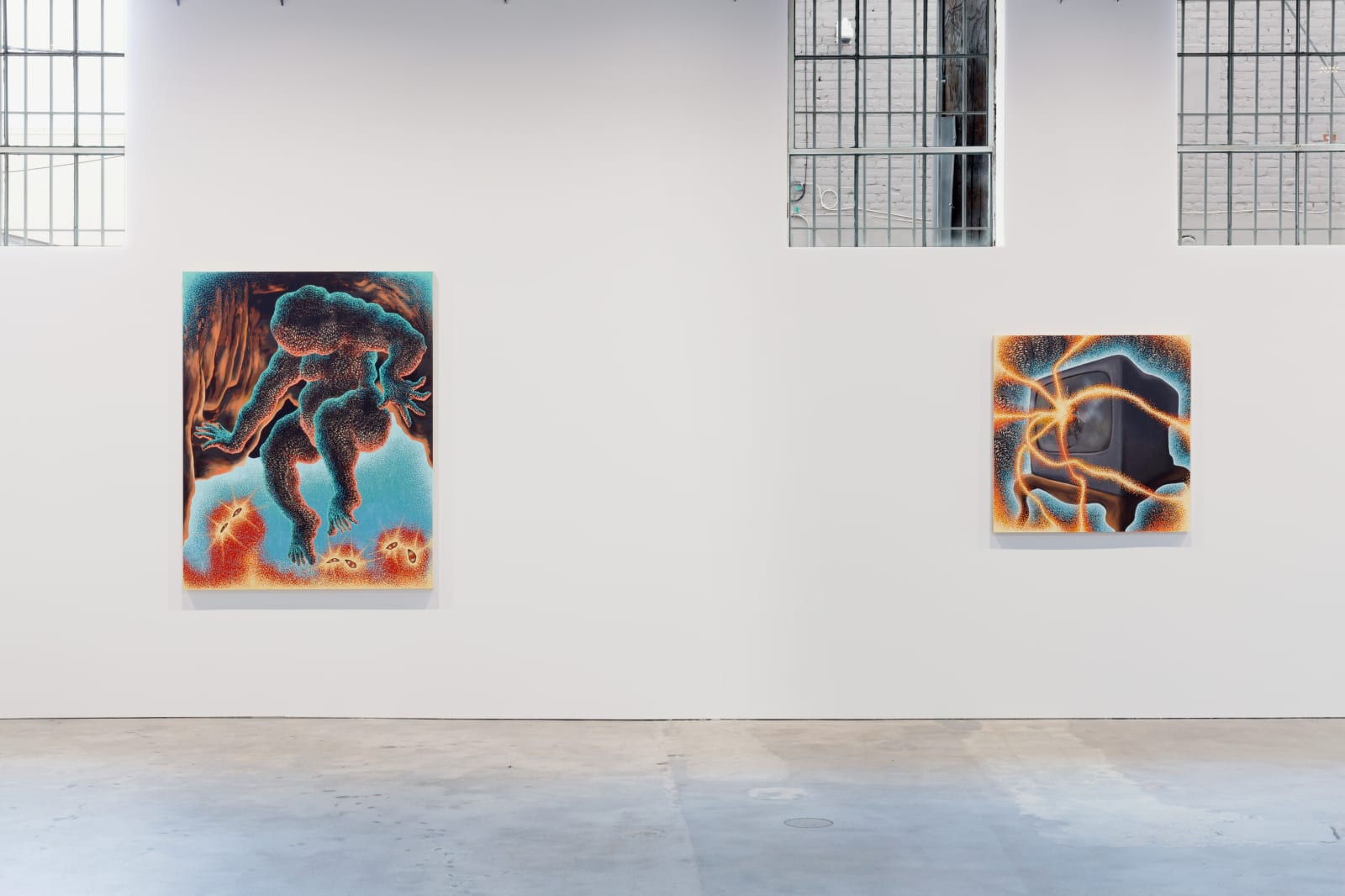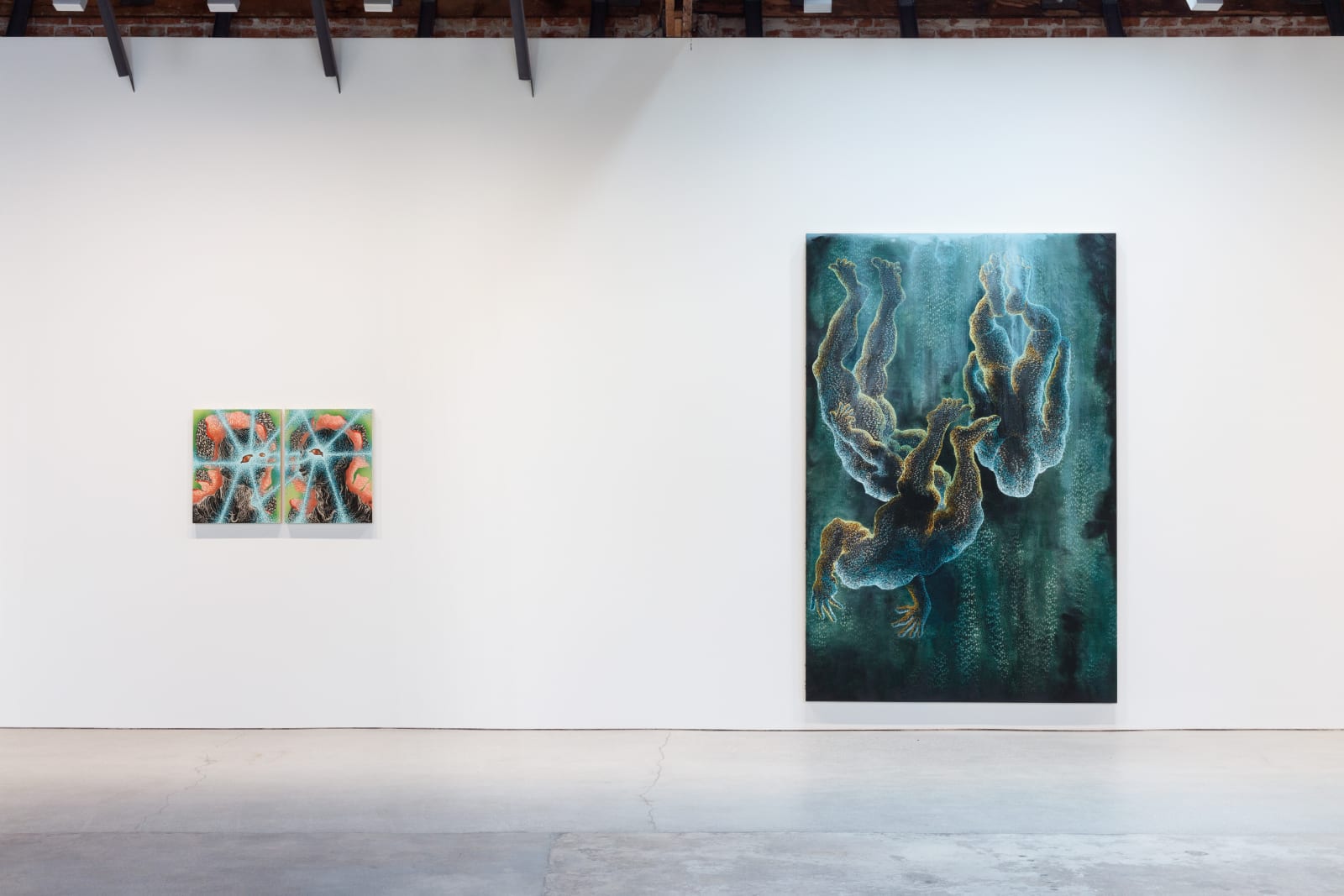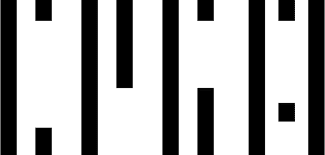Presenting fourteen new paintings, Things Like This Don’t Happen Here advances William’s ongoing investigation of language, aesthetics, tradition, trauma, and autobiography in a manner that is deeply imaginative, mythological, and metaphysical in perspective.
William’s new works describe underwater seascapes, suspended rock formations, tectonic splits, as well as scenes drawn from a place of memory. These images discard the kind of boundary that arbitrarily designates nation or possession. Instead they transpire at a different border: between heaven and hell, life and death, this life and the next, however we choose to name it. In this way, the ocean connotes the processes and history of immigration across the Caribbean, and at the same time visualizes a body of water as a spatial alternative, “a kind of weightless freedom.” Likewise the cave—of which there are hundreds in the artist’s birthplace of Haiti, both containing and preserving a kind of subterranean archive of the country's past—appears stripped of gravity, forming a pocket of space now in closer conversation with sky than ground. In other works, reimagined scenes from the artist’s childhood transfigure familial memory into mythology. Herein lies the body’s capacity to remember home, to remake space in the present.
The question of space is central to William’s thinking. Over time, formal devices such as the stage, curtains, and shadows have morphed into mountainous and oceanic terrains. In the artist’s newest body of work, this question itself transforms. The very topography of William’s images start to reveal secondary and tertiary domains, so that a new focus resides in moments of intersection between spaces. The image constructs a cross-section through which we observe both above and below; at the same time demarcating the end of the terrain and the beginning of the picture plane of the painting. All at once we are positioned between the representational present, the fleshy stratified earth, and the subterranean afterlife.
A brilliant, charged current runs throughout these manifold spaces, forming a portal between them. In one image, we see what it might look like from within if one of William’s figures were to pass through this electrified channel. In the exhibition title William cites an of-used euphemism. “Things like this don’t happen here” might be uttered when tragedy strikes, or indeed in an instance of remarkable good fortune. It pinpoints a moment of disconnect with something that has just occurred; a sense that the thing in question belongs someplace else. This is a spatial declaration as much as it is one about privilege or identity, connoting an identification and distancing in the very same phrase. William’s work establishes a conduit connecting such disparate elements to one another—an energy source like a bolt of lightning, charged by body rather than sky.













